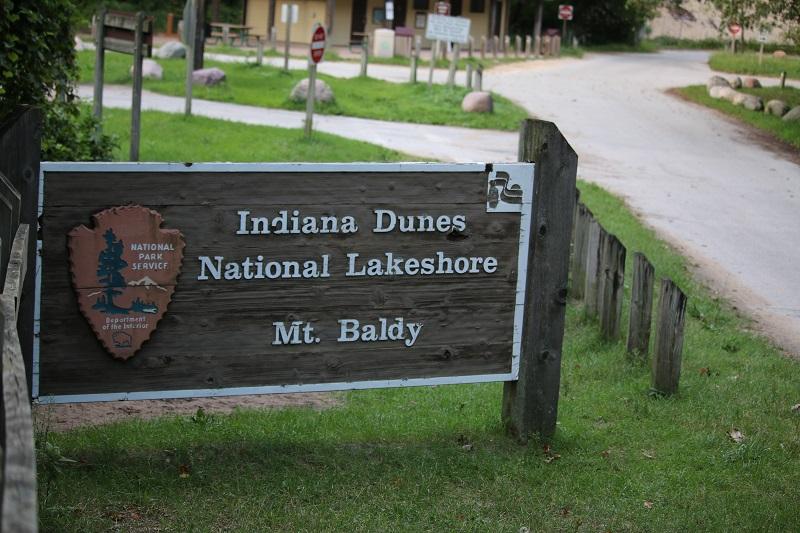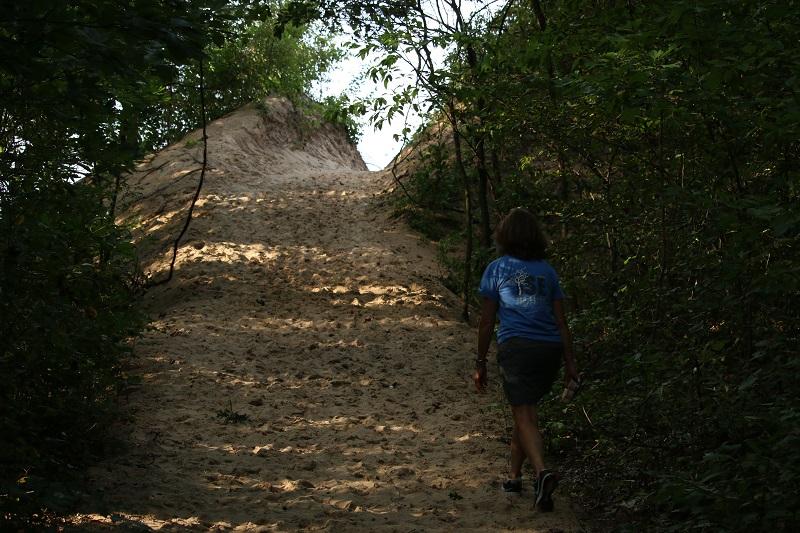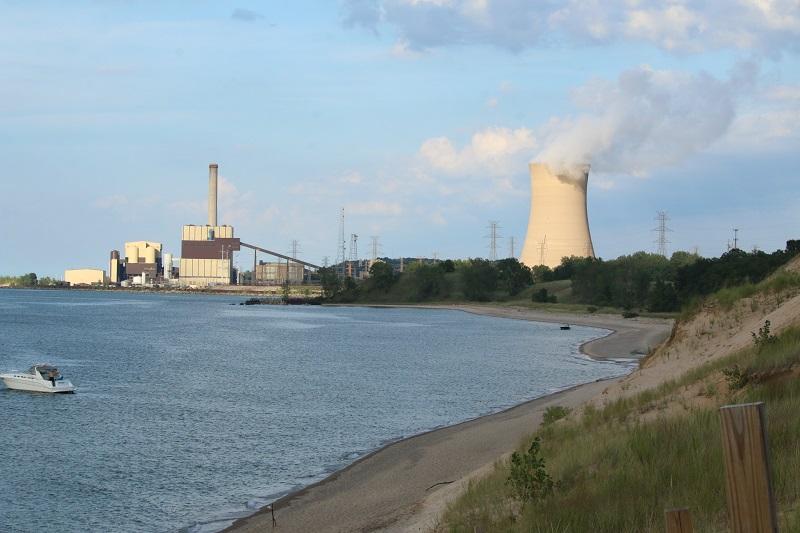
Indiana Dunes National Lakeshore entrance / Erika Zambello
We hiked through the trees, towards a break in the canopy that told us Lake Michigan was just up ahead. My mom and I had been driving mere minutes before, pulling a U-turn when a brown sign told us that an Indiana Dunes National Lakeshore access point sat less than a mile away. Having never before seen one of the famous Great Lakes, I couldn't pass up the opportunity to view the ocean-like vista with my own two eyes.
Encompassing around 15,000 acres, the lakeshore has been protected since 1966. Since the 19th century, activists worked to protect the iconic banks of Lake Michigan from development that threatened to encroach. The high dunes are perfect not only for viewing the surrounding landscape, but for the sand itself. According to the National Park Service: "In 1916, the region was booming with industry in the form of steel mills and power plants. Hoosier Slide, for example, 200 feet in height, was the largest sand dune on Indiana's lakeshore. During the first twenty years of the battle to save the dunes, the Ball Brothers of Muncie, Indiana, manufacturers of glass fruit jars, and the Pittsburgh Plate Glass Company of Kokomo carried Hoosier Slide away in railroad boxcars."
Local botanists and conservation advocates launched the Prairie Club to preserve the dunes and lakeshore for the enjoyment of future generations. Less than a month after the National Park Service itself was founded, hearings on a proposed "Sand Dune National Park" showcased public support for protection. Two wars and the Great Depression slowed progres (though a small state park did open), but many did not give up. In 1952, Dorothy Buell worked to establish the Save the Dunes Council, raising money to purchase the land outright. Finally, in 1966 conservationists and industrialists compromised: in exchange for the National Lakeshore, the Burns Waterway Harbor could open as well.

Trail to the beach / Erika Zambello.
The trees grew sparse, unable to grow in the pure sand that formed the shoreline. The trail created a gap in the dune wall, and from that portal Lake Michigan sparkled in the afternoon sunlight. Terns and gulls cruised the shallows, looking for food, and bright green grasses swayed in areas in which their roots could successfully latch. As our toes touched the freshwater, it was hard for my brain to grasp that I looked at a lake, not an ocean.
To our right, the NIPSCO power station stretched into the sky, smokestacks looming over the landscape. So close to the national park, the proximity of the power plant is a symbol of the at-times uneasy relationship between conservation and industry proponents in the region. Though the plant definitely altered the scene, I still felt the magic of the lakeshore. An angler tried his luck from a boat nearby, while a young family splashed into the waves, finding a relief from the late summer heat. In addition to providing recreation opportunities, the national park has become a haven for wildlife as well, including over 350 bird species.

View of the power plant / Erika Zambello.
Our visit proved a short one, a mere pitstop on a longer road trip. Still, my first memory of the American Great Lakes will always be thanks to Indiana Dunes National Lakeshore, and to all those who fought for its designation.



Add comment